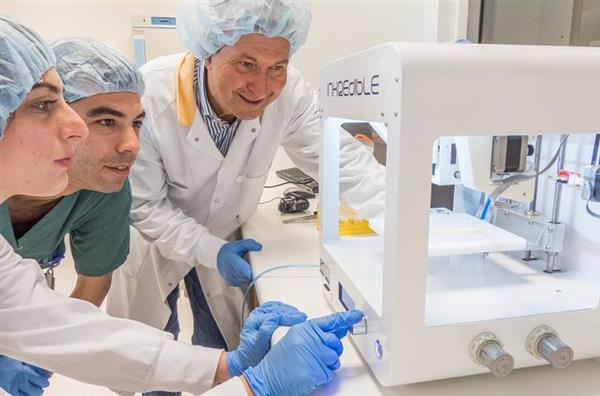Bioprinted Cartilage
Cartilage Repair is Revolutionised by 3D Printing, Offering a Glimmer of Hope for Damaged Joints
Over time, cartilage—the elastic, smooth tissue that cushions our joints—wears down and becomes less flexible, which can cause persistent pain and limited movement. Conventional therapies are only partially effective, but a novel strategy that makes use of 3D printing offers a ground-breaking route to recovery: bioprinting living, functioning cartilage tissue.
Table of Contents

The Problem: Damaged Cartilage, Few Options
Bioprinted Cartilage
Because cartilage lacks the blood vessels necessary for spontaneous repair, healing is challenging. Although they frequently fall short of a complete restoration, current alternatives like transplants and microfracture surgery can offer momentary relief. The restrictions are noteworthy:
- Scar tissue formation: Rather than producing healthy cartilage, traditional procedures frequently produce scar tissue, which compromises long-term functionality.
- Lack of donors: Because cartilage transplants depend on donated tissue, there is a risk of donor shortage and rejection.
- Restricted size and shape: The cartilage shapes that are essential for the best possible joint performance are difficult for current choices to replicate.
The Answer: Customised Cartilage Implant Printing
Bioprinted Cartilage
A promising solution is provided by the combination of cutting-edge bioprinting techniques with 3D printing technology. This strategy entails:
- Retrieving stem cells from patients: A tiny quantity of stem cells is taken out of the patient’s own bone marrow.
- Using specialised ink for bioprinting: These cells are carefully mixed with biocompatible substances to create a “bioink” that is intended to promote cell proliferation and resemble cartilage in nature.
- Accurate 3D printing: The patient’s injured cartilage is precisely shaped and sized by layering bioink onto itself using sophisticated 3D printers.
- Implantation and growth: The patient’s joint is subsequently implanted with the bioprinted cartilage implant. The stem cells develop into healthy cartilage tissue over time, blending in perfectly with the surrounding joint.
Benefits of Cartilage Printing:
Bioprinted Cartilage
- Personalised medicine: A genuinely customised treatment is produced by minimising the chance of rejection by employing the patient’s own cells.
- Complex shapes: 3D printing makes it possible to accurately reproduce complex cartilage structures, guaranteeing the best possible joint performance.
- Decreased scar tissue: By encouraging the creation of healthy tissue, the biocompatible materials and cell-based technique help to reduce the amount of scarring.
- Sustainable source: Provides an easily accessible and morally acceptable alternative by doing away with the requirement for donor tissue.
The Journey Ahead: From Hope to Actuality
Although the field is still in its infancy, bioprinted cartilage has enormous potential. The ultimate goal is to expand this technology for healing larger cartilage abnormalities and possibly complete joints, while current trials concentrate on small-scale repairs.
There are still a number of obstacles to overcome, such as enhancing the composition of the bioink, accelerating the development of cells, and guaranteeing the implants’ long-term effectiveness. Nonetheless, bioprinted cartilage has great potential to transform the way we treat joint injuries and restore mobility for millions of people with cartilage damage as long as research and development continue.
This innovative technique opens the door to more effective and customised treatments for different tissues and organs, providing a look into the future of personalised medicine. Bioprinting has the potential to revolutionise healthcare as research advances, providing hope to innumerable individuals who long for an active and pain-free existence.


